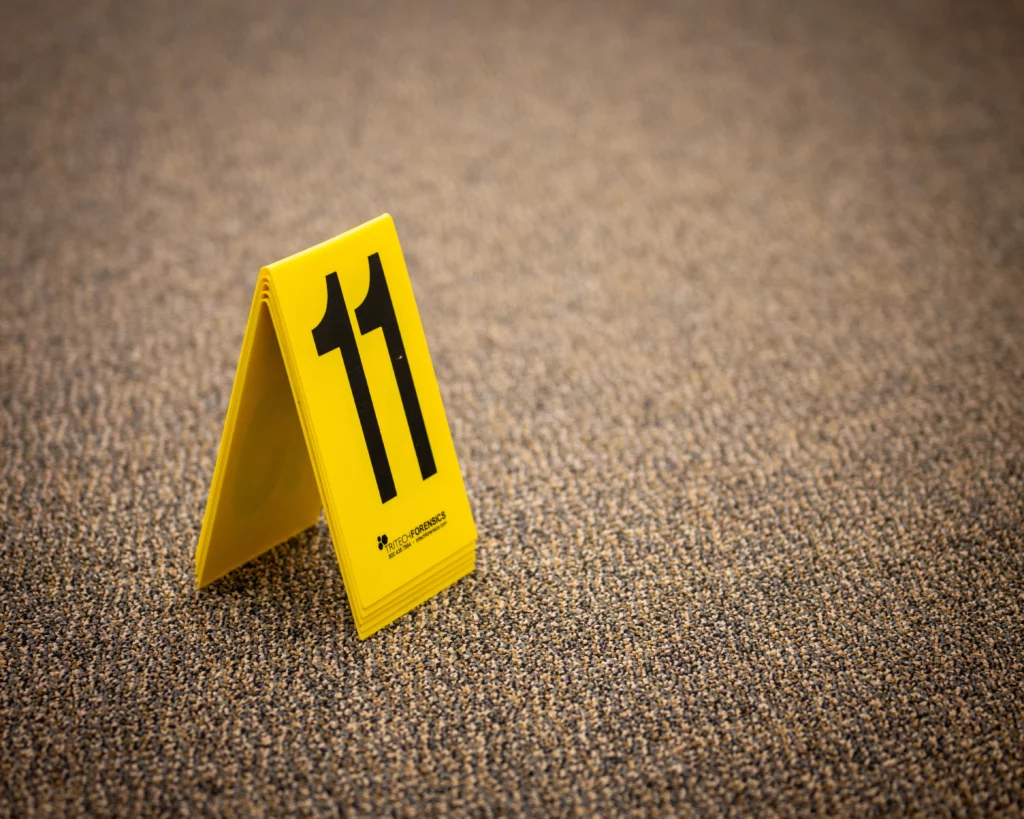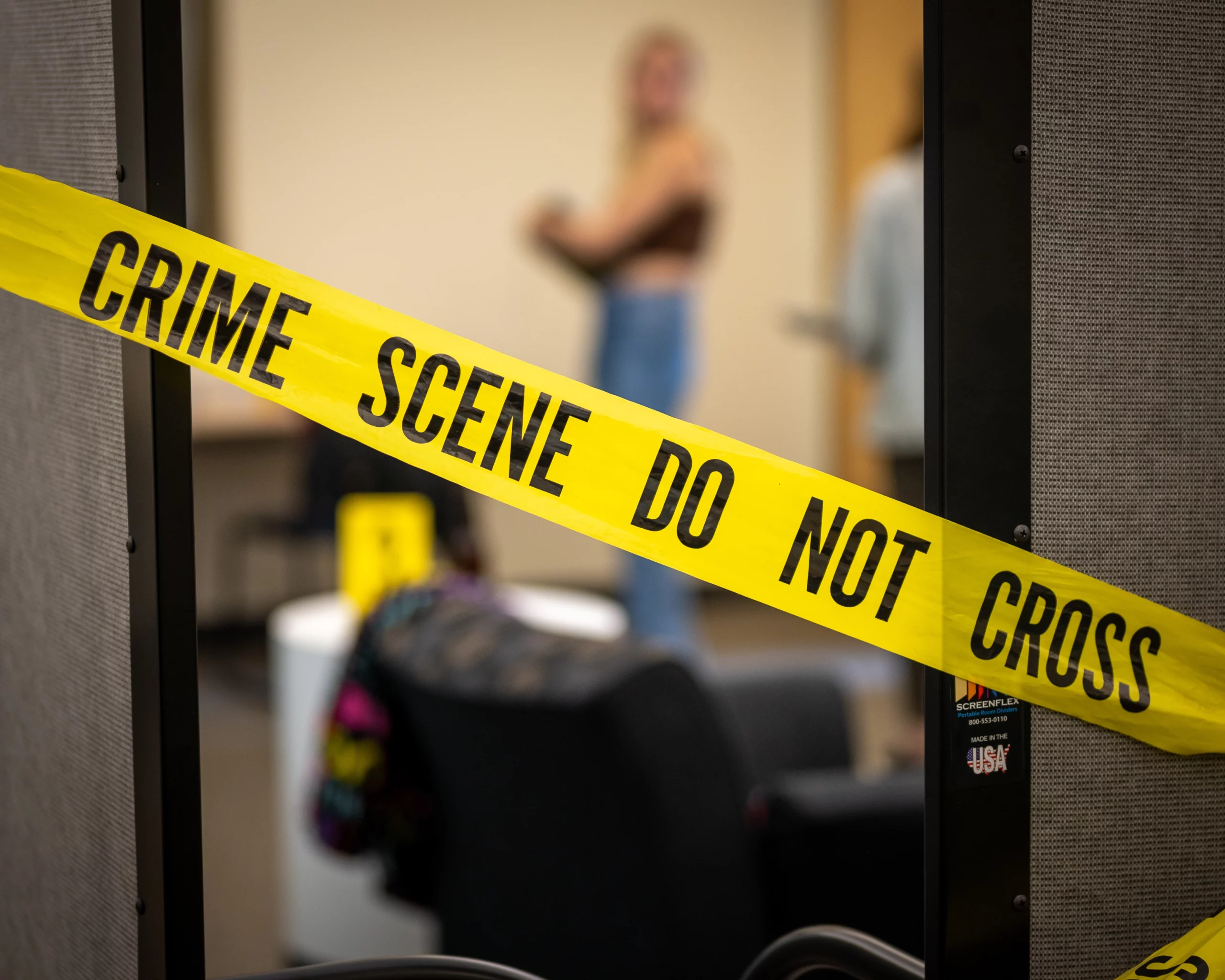A peek into MacEwan’s Police and Investigations studies program and crime lab
When I heard that the Griff was presented with the opportunity to write a story about the on-campus crime lab used by the Police and Investigations program, I was jazzed.
Look, I’ll be honest, the excitement mostly came from the hope of playing a dead body in one of their crime scene simulations — a girl can dream. But I’ve heard through the grapevine that the program actually has a lot to offer its students.
The Police and Investigations Program at MacEwan is divided into two studies: Investigative Studies and Police Studies. I spoke to an assistant professor and a student from the investigations studies side to gain a tighter grasp of the two-year program.
Lisa Paniak, a forensic science and investigations professor, says she’s excited to teach students the discipline she’s been practicing for years. “I was in forensics with the Edmonton Police Service (EPS) for eleven years,” she exclaims. “It’s good to get back to what I’m passionate about.”
“It’s a great program, and the knowledge that you gain here applies to many areas of study, It’s a starting point, and regardless of where you end up, you’ll always take something from it.”
Lisa Paniak, DEPARTMENT of PUBLIC SAFETY and JUSTICE STUDIES
The students learn everything, including sociology, criminology, and interpersonal communication skills. What many students cherish the most about the program is the crime laboratory. “It’s quite a fun place where we can do hands-on work instead of sitting in lectures,” says Paniak.
The crime lab, located on the third floor of the Robbins Health Centre (building nine), houses professional equipment that students would use in the field, such as fingerprint and chemical supplies, cameras, and a station for footwear comparison.
“We have access to one of the therapy and nursing rooms, which is set up with a kitchen, a living room, and a bedroom,” Paniak states, “Those are really fun areas to lay out scenes in because they’re not so static.”
In the crime labs, instructors work hard to provide the students with real-life examples of crime scenes to make the labs as realistic as possible. “The instructor, who was here before me, was a bloodstain analyst,” Paniak recalls, “The student would try to figure out the area of impact and measurements; it was very scientific.”

Excelling in a career related to crime investigation requires attention to detail, critical thinking skills, and hands-on experience. Lisa and the other instructors in the program are determined to provide the kinesthetic knowledge necessary to excel in this field.
“You can’t learn a lot of the coursework unless you do it,” says Paniak.
There are 35 students in investigative studies and 45 students in police studies. The small class sizes cultivate student comradery you can’t replicate in large classrooms. “Students form close relationships, and they all go to the same classes,” Paniak smiles, “The small community that MacEwan offers is wonderful.”
Emmet Wright, a second-year student and aspiring RCMP officer had nothing but praises to sing about his experience in the investigations program. “The best thing I have been learning is how to interact with people and be more sociable,” he says. “Between sociology and criminology knowledge, there are so many skills we’re learning. These investigations are my favorite part!”
Every job comes with rewarding moments and, simultaneously, challenging ones.
The current political climate surrounding police brutality against people of colour has put the Edmonton Police Service in the hot seat, with citizens observing their every move.

I was curious as to whether MacEwan’s police studies program prepares its students with cultural sensitivity training to ensure that students are well-equipped for the responsibility that accompanies their power.
“There are a lot of courses that deal with talking to people and wellness, diversity, and culturalism,” says Paniak. Fortunately, courses PSSC 112 (“Policing in Canada”) and PSSC 203 (“Mental Health Foundations in Public Safety”) cover many budding diversity and cultural circumstances that officers encounter on the job.
The public holds the right to hold the police accountable for their professional conduct. It is just as imperative for the public to be aware of the education future police officers receive, considering they are largely responsible for our mass safety. Cultural sensitivity training is the first step toward a future where all members of society are treated fairly as human beings by the police.
“The knowledge that you gain here applies to many areas of study,” says Paniak, “It’s a starting point, and regardless of where you end up, you’ll always take something from it.”
Photography by Sam Poier





0 Comments